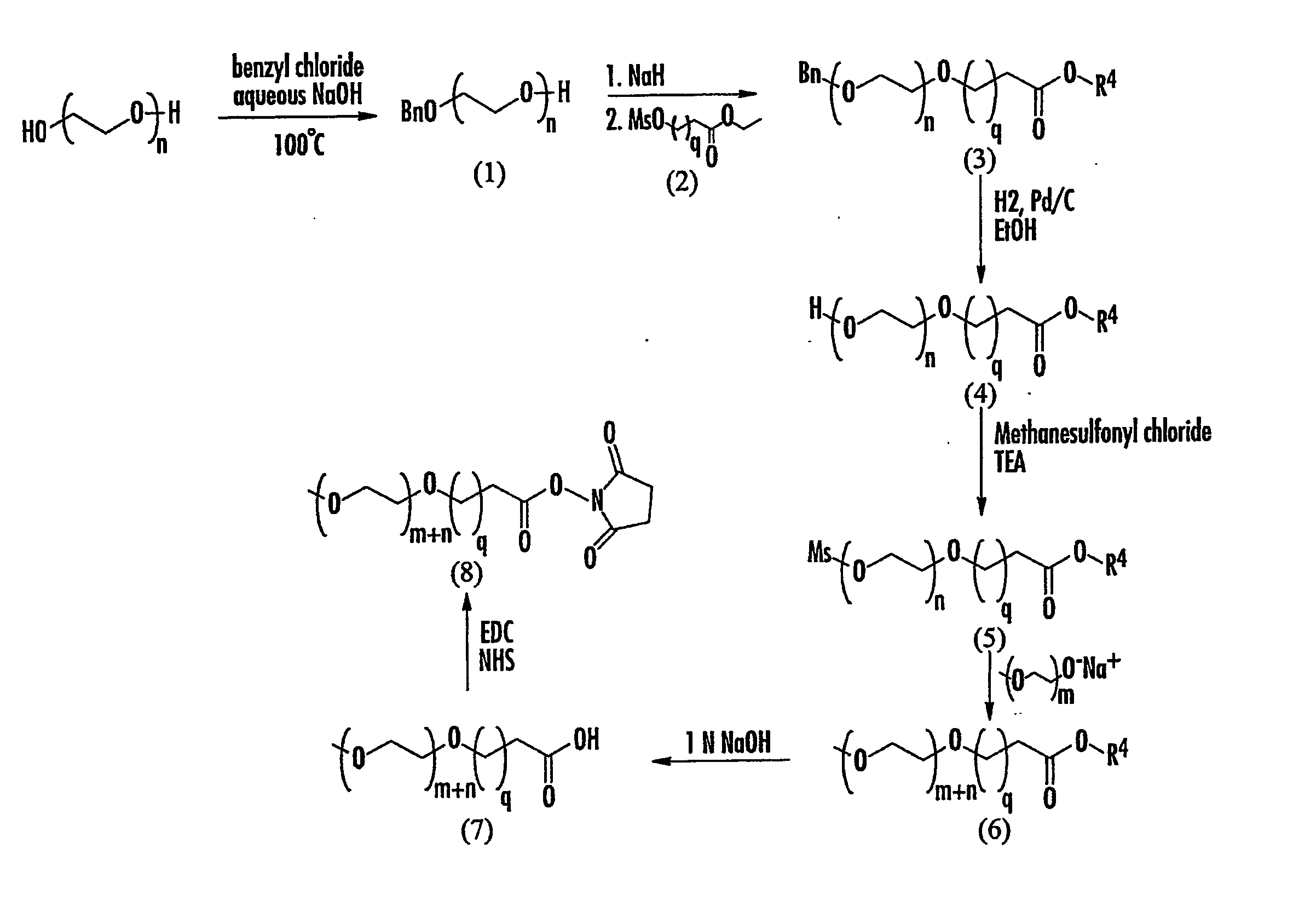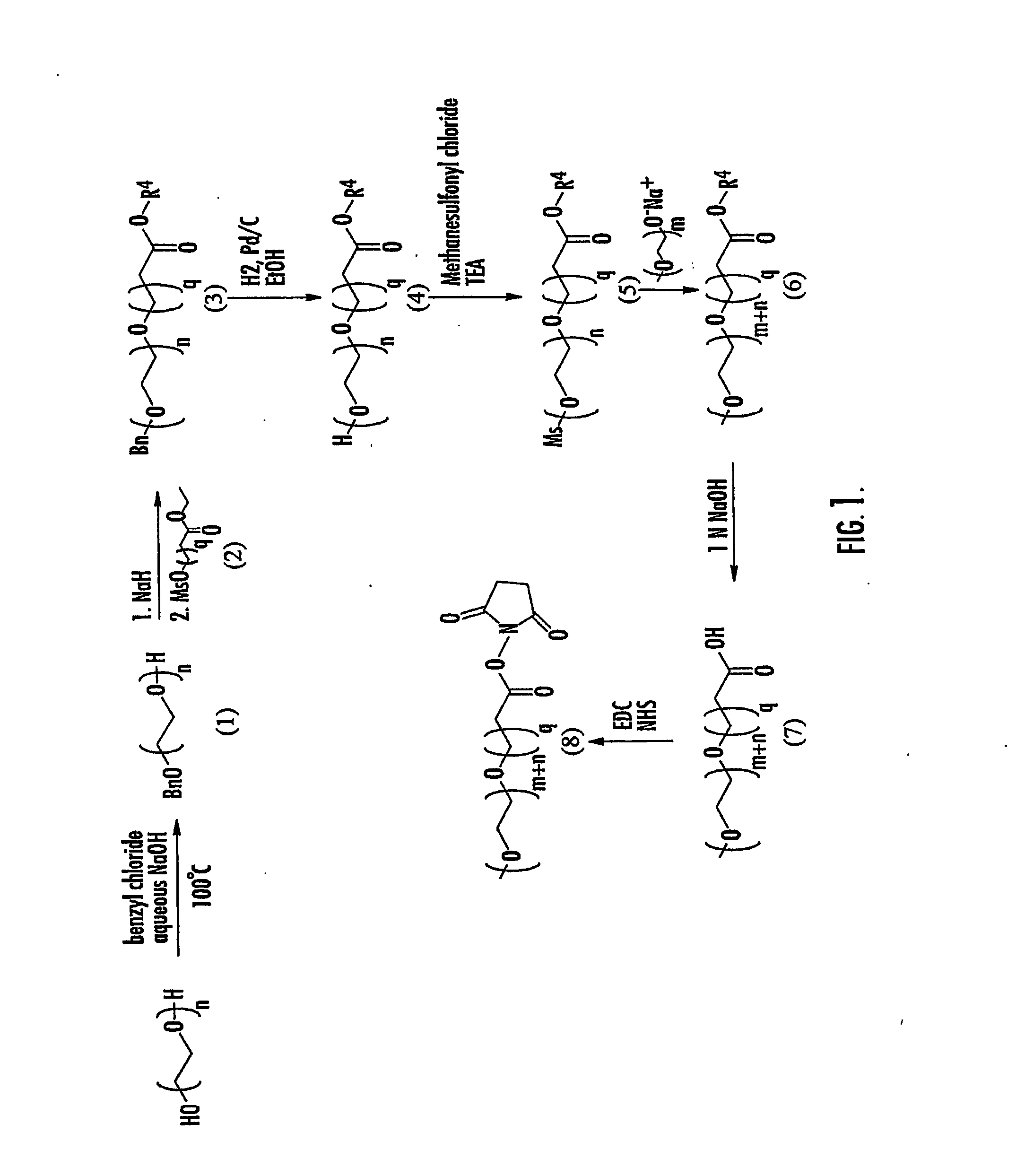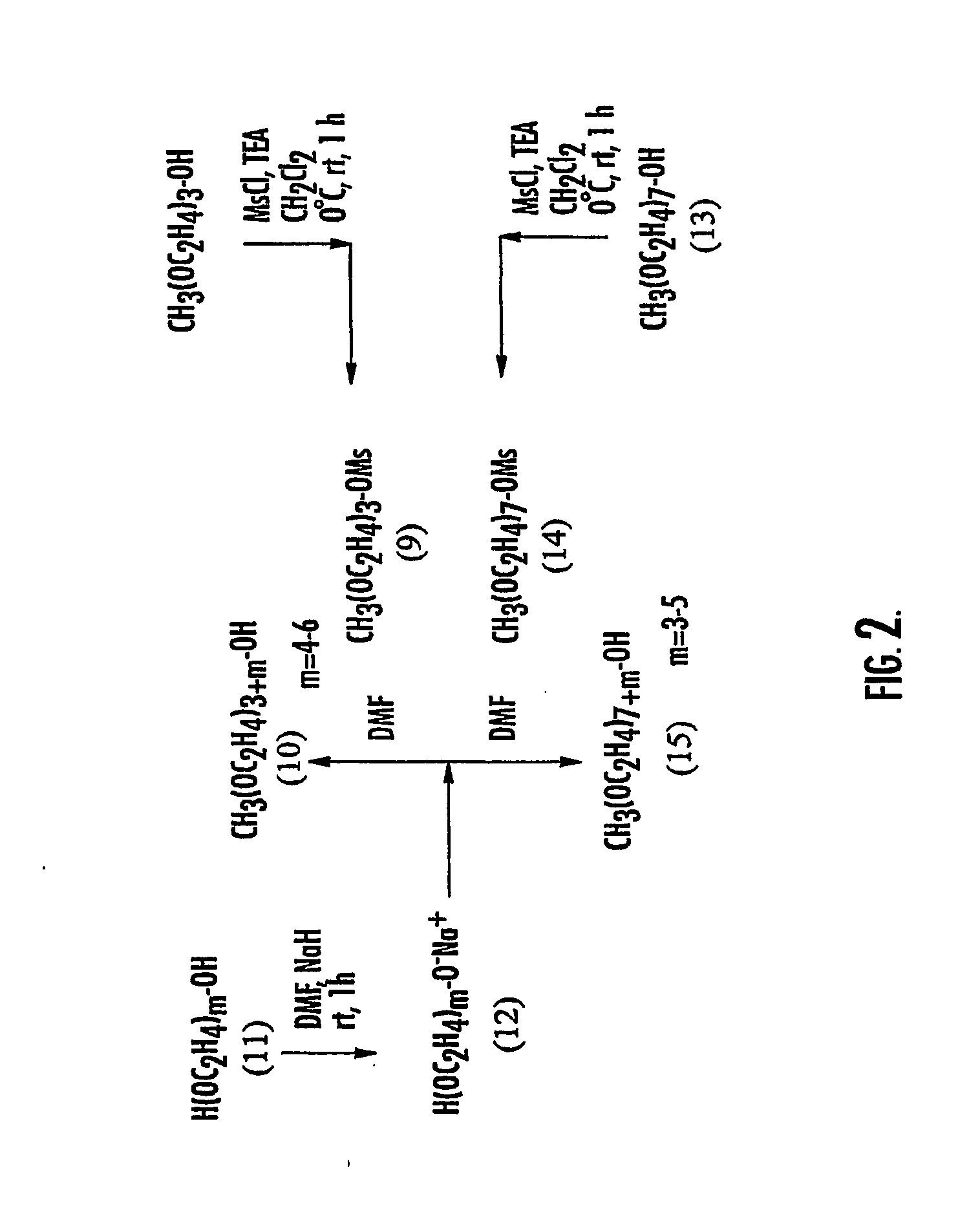Mixtures Of Calcitonin Drug-Oligomer Conjugates And Methods Of Use In Pain Treatment
a technology of calcitonin and drugoligomer, which is applied in the field of drugoligomer conjugates, can solve the problems of reduced bone amount, impaired structural integrity of trabecular bone, and hypocalcemic and/or hypophosphatemic serum effects, and achieves the effect of lower serum calcium levels and higher bioavailability
- Summary
- Abstract
- Description
- Claims
- Application Information
AI Technical Summary
Benefits of technology
Problems solved by technology
Method used
Image
Examples
examples 1 through 10
[0315] Reactions in Examples 1 through 10 were carried out under nitrogen with magnetic stirring, unless otherwise specified. “Work-up” denotes extraction with an organic solvent, washing of the organic phase with saturated NaCl solution, drying (MgSO4), and evaporation (rotary evaporator). Thin layer chromatography was conducted with Merck glass plates precoated with silica gel 60° F.-254 and spots were visualized by iodine vapor. All mass spectra were determined by Macromolecular Resources Colorado State University, CO and are reported in the order m / z, (relative intensity). Elemental analyses and melting points were performed by Galbraith Laboratories, Inc., Knoxville, Tenn. Examples 1-10 refer to the scheme illustrated in FIG. 2.
example 1
8-Methoxy-1-(methylsulfonyl)oxy-3,6-dioxaoctane (9)
[0316] A solution of non-polydispersed triethylene glycol monomethyl ether molecules (4.00 mL, 4.19 g, 25.5 mmol) and triethylamine (4.26 mL, 3.09 g, 30.6 mmol) in dry dichloromethane (50 mL) was chilled in an ice bath and place under a nitrogen atmosphere. A solution of methanesulfonyl chloride (2.37 mL, 3.51 g, 30.6 mmol) in dry dichloromethane (20 mL) was added dropwise from an addition funnel. Ten minutes after the completion of the chloride addition, the reaction mixture was removed from the ice bath and allowed to come to room temperature. The mixture was stirred for an additional hour, at which time TLC (CHCl3 with 15% MeOH as the elutant) showed no remaining triethylene glycol monomethyl ether.
[0317] The reaction mixture was diluted with another 75 mL of dichloromethane and washed successively with saturated NaHCO3, water and brine. The organics were dried over Na2SO4, filtered and concentrated in vacuo to give a non-polyd...
example 2
Ethylene glycol mono methyl ether (10) (m=4, 5, 6)
[0318] To a stirred solution of non-polydispersed compound II (35.7 mmol) in dry DMF (25.7 mL), under N2 was added in portion a 60% dispersion of NaH in mineral oil, and the mixture was stirred at room temperature for 1 hour. To this salt 12 was added a solution of non-polydispersed mesylate 9 (23.36) in dry DMF (4 ml) in a single portion, and the mixture was stirred at room temperature for 3.5 hours. Progress of the reaction was monitored by TLC (12% CH3OH—CHCl3). The reaction mixture was diluted with an equal amount of 1N HCl, and extracted with ethyl acetate (2×20 ml) and discarded. Extraction of aqueous solution and work-up gave non-polydispersed polymer 10 (82-84% yield).
PUM
| Property | Measurement | Unit |
|---|---|---|
| molecular weight | aaaaa | aaaaa |
| time | aaaaa | aaaaa |
| molecular weight | aaaaa | aaaaa |
Abstract
Description
Claims
Application Information
 Login to View More
Login to View More - R&D
- Intellectual Property
- Life Sciences
- Materials
- Tech Scout
- Unparalleled Data Quality
- Higher Quality Content
- 60% Fewer Hallucinations
Browse by: Latest US Patents, China's latest patents, Technical Efficacy Thesaurus, Application Domain, Technology Topic, Popular Technical Reports.
© 2025 PatSnap. All rights reserved.Legal|Privacy policy|Modern Slavery Act Transparency Statement|Sitemap|About US| Contact US: help@patsnap.com



